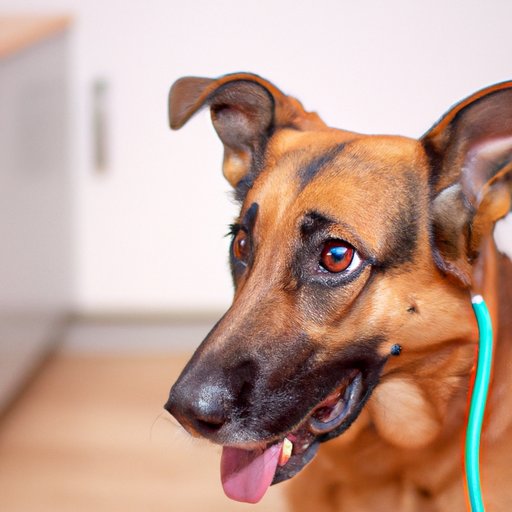
I. Introduction
As a dog owner, one of your main priorities is to keep your furry friend healthy and happy. Detecting the early signs of illness is essential to ensuring that your dog stays in good shape and receives timely treatment. In this article, we will cover the main signs of illness in dogs, how to detect them, and what you can do to prevent common dog diseases.
II. Symptom Checklist
It is important to know what symptoms to look for when it comes to detecting illness in dogs. Some of the most common signs that your dog may be sick include:
- Lack of appetite or sudden weight loss
- Lethargy or lack of energy
- Vomiting or diarrhea
- Coughing or sneezing
- Fever or abnormal body temperature
- Limping or difficulty getting up/moving around
- Excessive thirst or urination
- Changes in skin or coat appearance
Each symptom can indicate different health problems and it is important to pay attention to any changes in your dog’s behavior.
III. Change in Behavior
Dogs are social animals, and any changes in their behavior could be linked to an underlying health problem. Some common changes to look out for include:
- Increased aggression or irritability
- Becoming more withdrawn or less playful
- Refusing to eat or drink water
- Being less active than usual
- Excessive panting or drooling
- Restlessness or pacing
- Exhibiting signs of pain (whining, yelping, limping, etc.)
If you notice any of these changes, it is important to observe your dog closely for other signs of illness and contact your veterinarian if you have any concerns.
IV. Physical Observations
When you suspect your dog is ill, a physical exam can help identify any physical abnormalities. Look for:
- Abnormal breathing or wheezing
- Wounds, lumps, or bumps
- Discharge from the eyes or nose
- Hair loss or itchy skin
- Swollen lymph nodes
- Abnormalities in the mouth, teeth, or gums
If you detect any of the above, it is time to visit the veterinarian.
V. Check the Vital Signs
Measuring your dog’s vital signs can help you determine if your dog is experiencing an underlying health issue. The following are important vital signs to look for:
- Respiratory rate (breathing): Count the number of breaths per minute.
- Heart rate: Feel your dog’s chest for the heartbeat. A normal heart rate is between 60-100 beats per minute.
- Body temperature: Use a rectal thermometer to check your dog’s temperature. A normal temperature is between 99.5-102.5 degrees Fahrenheit.
If any of these vital signs are abnormal, it is important to contact a vet immediately.
VI. Vet Visit
If you suspect your dog is ill, the best course of action is to visit a veterinarian. A vet can provide a professional diagnosis and recommend appropriate treatment. Some signs that warrant a vet visit include:
- Difficulty breathing
- Severe vomiting/diarrhea
- Unexplained weight loss
- Abnormal behavior or lethargy that persists for more than a day
- Severe pain or discomfort
During a vet visit, expect the vet to examine your dog thoroughly, take X-rays or blood tests if needed, and provide a recommended treatment plan.
VII. Preventive Measures
Preventing illness is the best way to keep your dog healthy and happy. The following tips can help prevent common dog diseases:
- Proper nutrition: Feed your dog a balanced diet with plenty of protein, vitamins, and minerals.
- Vaccination: Make sure your dog receives the recommended vaccinations for their age and lifestyle.
- Exercise: Give your dog plenty of opportunities to exercise and play to maintain healthy joints and muscles.
- Regular grooming: Keep your dog clean and free of fleas and ticks to prevent skin infections and illnesses.
VIII. Conclusion
Early detection of illness in dogs is essential for maintaining their health and happiness. If you notice any changes in behavior, physical symptoms, or vital signs, it is important to contact a veterinarian as soon as possible. In addition to providing timely medical care, taking preventive measures such as proper nutrition, vaccination, exercise, and grooming can help reduce the risk of common dog diseases. By being vigilant and proactive, you can ensure that your furry friend stays in good shape for years to come.




